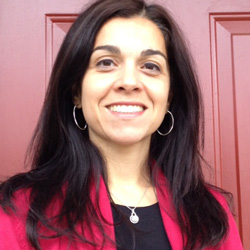 By Kiran Gaudioso, Vice President of Program Operations for
By Kiran Gaudioso, Vice President of Program Operations for
New Jersey After 3
I thoroughly enjoyed listening to the conversation between Hannah and Eric. They discussed an extremely important aspect of grant writing and data collection. As those of us in the youth development and education sector know, the use of the free and reduced lunch data is an accepted measure to prove “need” within a particular school community. However for high schools, as Hannah explained, it isn’t necessarily the best way to measure community and school “need,” for two reasons: 1) it requires families to self report their status. High school students don’t want to be viewed as poor or in need, so high school students have a tendency to not submit a request for free and reduced lunch benefits. 2) NYC High Schools tend to draw students from all over the five boroughs, requiring students to commute up to two hours each way. These transportation logistics make it even harder to collect parent information, such as free and reduced lunch needs, because the parents are rarely in the school building.
Simple logistics coupled with a student’s desire to fit in can significantly impact the ability of a school to demonstrate true community need. But, no one had officially raised the issue with the NY State Department of Education before. That is, until Hanaa received notification that her organization didn’t receive funding for a 2010 proposal to the 21st Century Community Learning Centers program to support the afterschool programs at Murray Bergtraum High School because of a lack of “community need.” That is when she started to peel back the process layers to uncover the need for change in the current data collection standards.
After identifying what Hanaa believed to be a lack of fairness in the 21st Century Community Learning Center process, she wrote an appeal asking for reconsideration to the NY State comptroller. She explained her concerns in a professional and concise manner that motivated other organizations and policymakers to take notice and get involved as well. Other issues related to the review process also surfaced – such as how the peer review was conducted.
In the world of grant writing, this situation highlights the need for data requirements to accurately represent the community and population being discussed in the grant application. It emphasizes the need to dig deeper into data to truly understand how information is collected, who collected it, and when and where it was collected. We can’t always assume that a chart of statistics tells the entire story.
Hanaa’s story serves as a great example of how one person can be moved to action and engage others in a simple yet significant issue. In a time of tremendous change in the youth development and education sectors, it is re-assuring to know that basic principals of fairness and equal process are important to decision makers and that a process exists to invite dissent and explore other options.
I think others will appreciate the passion, integrity, and sense of justice that Hanaa shared throughout the interview. She inspired me to more carefully keep in mind that each community, school, family and child are unique, and not simply a point of data on a spreadsheet.